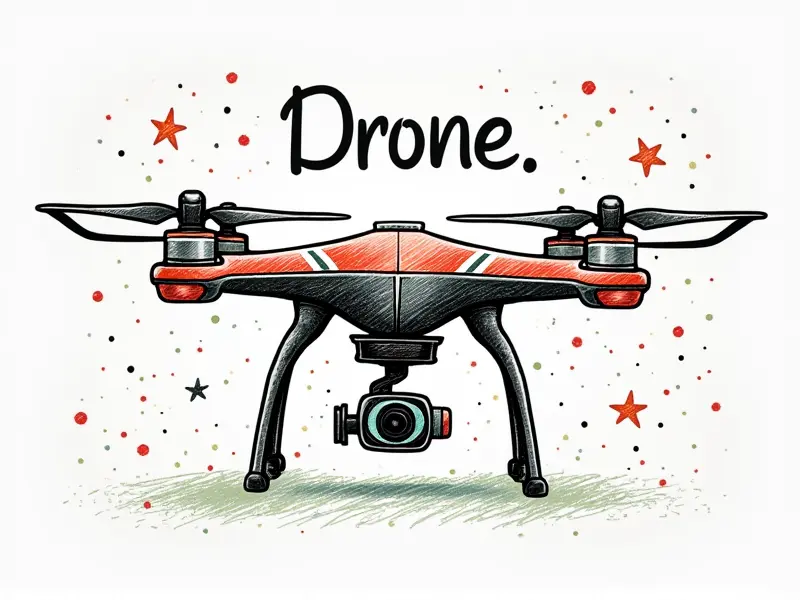How to diagnose a bad battery?

How to Diagnose a Bad Battery in RC Drones
How to Spot a Failing Drone Battery
The first step in diagnosing a bad drone battery is recognizing the early warning signs. Here are some key indicators:
- Voltage Drop: If your battery voltage drops rapidly during flight, it could be an indication of internal resistance or damage.
- Inconsistent Performance: A noticeable decrease in performance and speed can suggest a failing battery.
- Swelling Battery Case: Swollen batteries are often the result of overcharging or overheating, leading to potential safety issues.
Signs Your RC Drone Battery Needs Replacement
Understanding when your drone battery needs replacement is essential for maintaining both the longevity and performance of your device. Here are some clear signs:
- Rapid Discharge: If your battery discharges quickly, especially during high-demand activities like FPV racing.
- Poor Flight Time: A significant reduction in flight time compared to previous flights can indicate a failing battery.
- Visible Damage: Any physical damage or signs of wear on the battery’s casing should prompt immediate replacement.
Common Symptoms of a Dying FPV Racing Drone Batteries
FPV racing drones operate under extreme conditions, making it crucial to recognize when their batteries are reaching the end of their lifespan:
- Hiccupping Motors: Intermittent motor performance can be a sign of voltage drop.
- Reduced Acceleration: Slower acceleration and responsiveness during races indicate diminishing battery capacity.
- Battery Heating: Excessive heating, especially after short flights, suggests internal resistance issues.
Detecting Problems in RC Airplane Batteries
RC airplane batteries are subjected to unique stresses due to their larger size and higher power requirements. Here’s how to spot potential problems:
- Uneven Voltage Readings: If voltage readings vary significantly between cells, it could indicate a failing battery.
- Reduced Lift Capability: A sudden inability to lift the plane effectively can be due to decreased battery capacity.
- Increased Charging Time: Longer charging times often suggest that the battery is nearing its end of life.
Diagnosing Issues with RC Quadcopter Batteries
Quadcopters are highly dependent on consistent power supply, making it crucial to diagnose any issues early. Here’s what you should look out for:
- Battery Leakage: Any sign of liquid leakage from the battery can indicate severe damage.
- Poor Stability in Flight: Instability or sudden drops during flight suggest a failing battery.
- Voltage Spikes During Charging: Voltage spikes when charging can be an early indicator of internal resistance.
Troubleshooting Weak RC Helicopter Batteries
Helicopters, particularly micro and mini variants, require precise battery management. Here are some common issues to watch out for:
- Poor Control Response: Delayed or sluggish response from the controls can be a sign of low battery capacity.
- Frequent Hovering Issues: Difficulty maintaining stable hover positions indicates reduced power output.
- Battery Expansion: Any noticeable expansion in the battery size is a red flag and should prompt immediate replacement.
How to Test the Health of Your RC Battery
To ensure your drone’s battery is functioning optimally, you can perform several tests:
- Voltage Testing: Use a multimeter to check voltage levels before and after charging.
- Battery Capacity Test: Measure the capacity by discharging the battery completely under controlled conditions.
- Internal Resistance Check: Utilize specialized equipment or apps for an accurate internal resistance reading.
Tips for Diagnosing Faulty RC Drone Batteries
Here are some practical tips to help you diagnose and address faulty drone batteries effectively:
- Maintain Proper Charging Habits: Avoid overcharging or undercharging your battery.
- Monitor Temperature: Keep an eye on the temperature of the battery during charging and use.
- Replace Damaged Cells: If a single cell is damaged, consider replacing it to maintain overall performance.
Identifying Symptoms of a Dying Quadcopter Battery
The symptoms of a dying quadcopter battery can vary but are often quite noticeable. Here’s what you should be aware of:
- Poor Flight Stability: Sudden loss of control or stability during flight.
- Battery Swelling: Any swelling in the battery casing, which can lead to safety hazards.
- Voltage Fluctuations: Significant variations in voltage readings during use.
Recognizing When Your RC Plane Battery Needs Replacement
Determining when your RC plane battery needs replacement involves several key indicators:
- Poor Lift Performance: Difficulty in lifting the aircraft, especially under load.
- Battery Heating: Excessive heat generation during use can indicate internal issues.
- Inconsistent Flight Times: Variability in flight duration from one session to another.
Detecting Early Warning Signs of Bad RC Helicopter Batteries
Micro and mini helicopters are particularly sensitive, making early detection crucial. Here’s how to spot issues before they become serious:
- Control Lag: Delayed response from the controls can be a sign of low battery capacity.
- Battery Leakage: Any signs of liquid leakage, which may indicate internal damage.
- Inability to Maintain Hover: Difficulty in maintaining stable hover positions during flight.
Conclusion
Maintaining the health and longevity of your RC drone batteries is essential for optimal performance. By staying vigilant for signs of battery degradation, performing regular tests, and adopting proper maintenance practices, you can extend the lifespan of your batteries and ensure a safe flying experience.
Always prioritize safety when handling batteries and follow manufacturer guidelines to prevent accidents or damage to your equipment.

